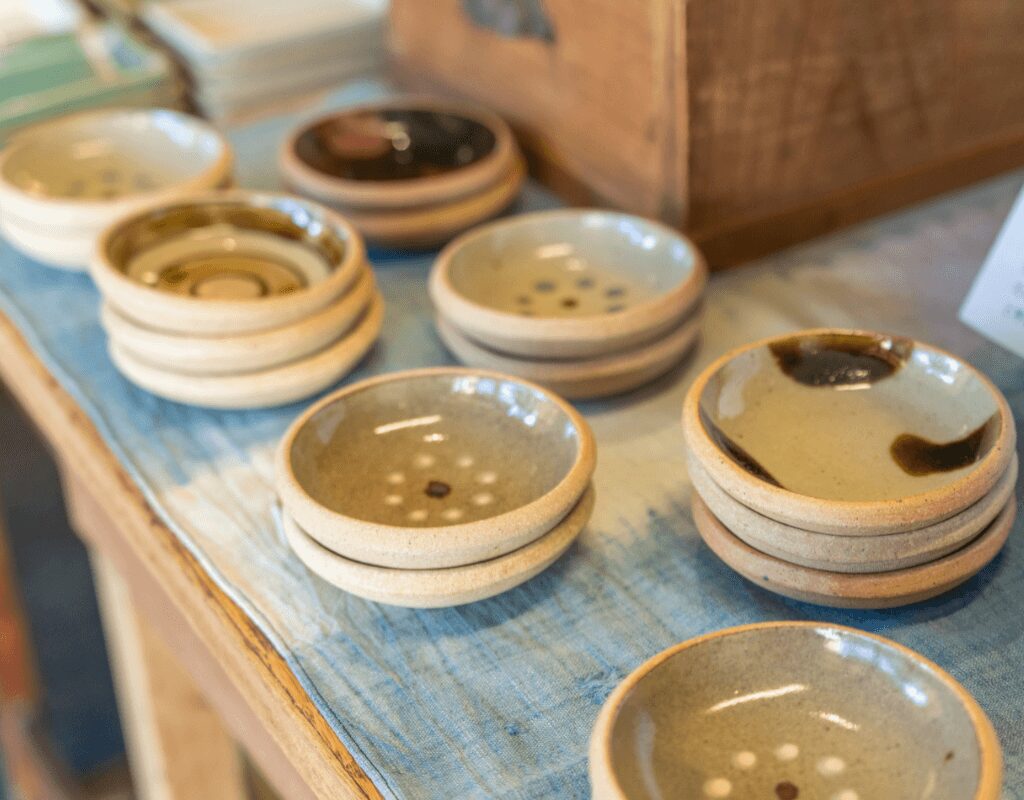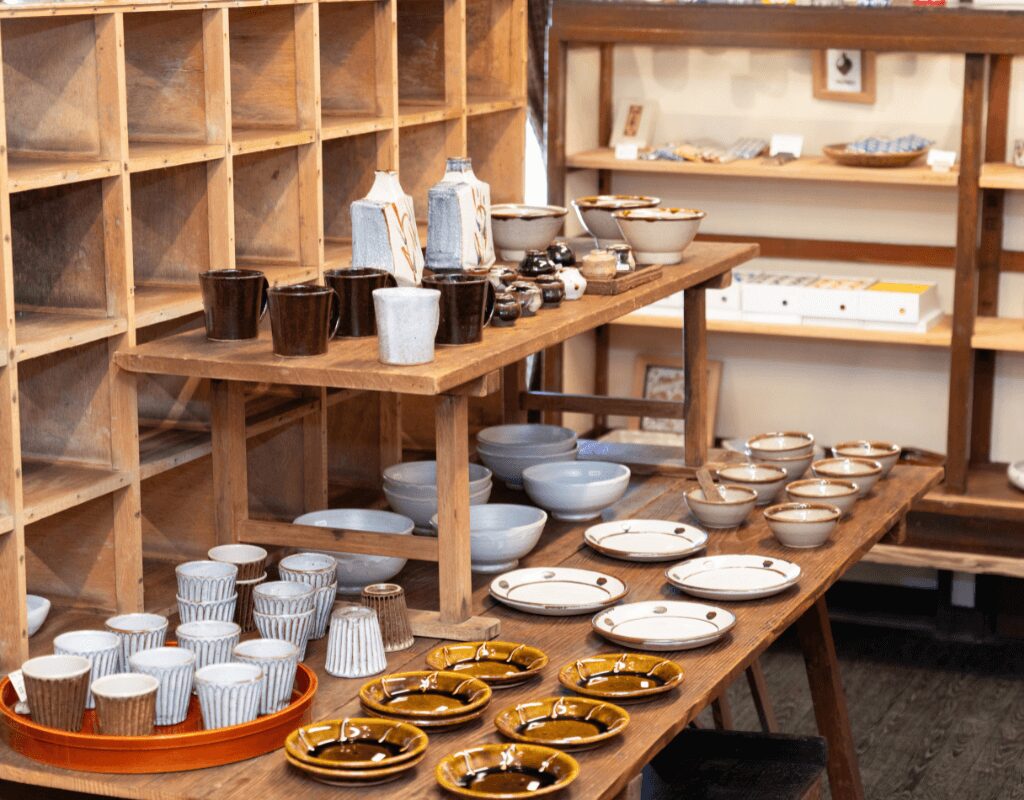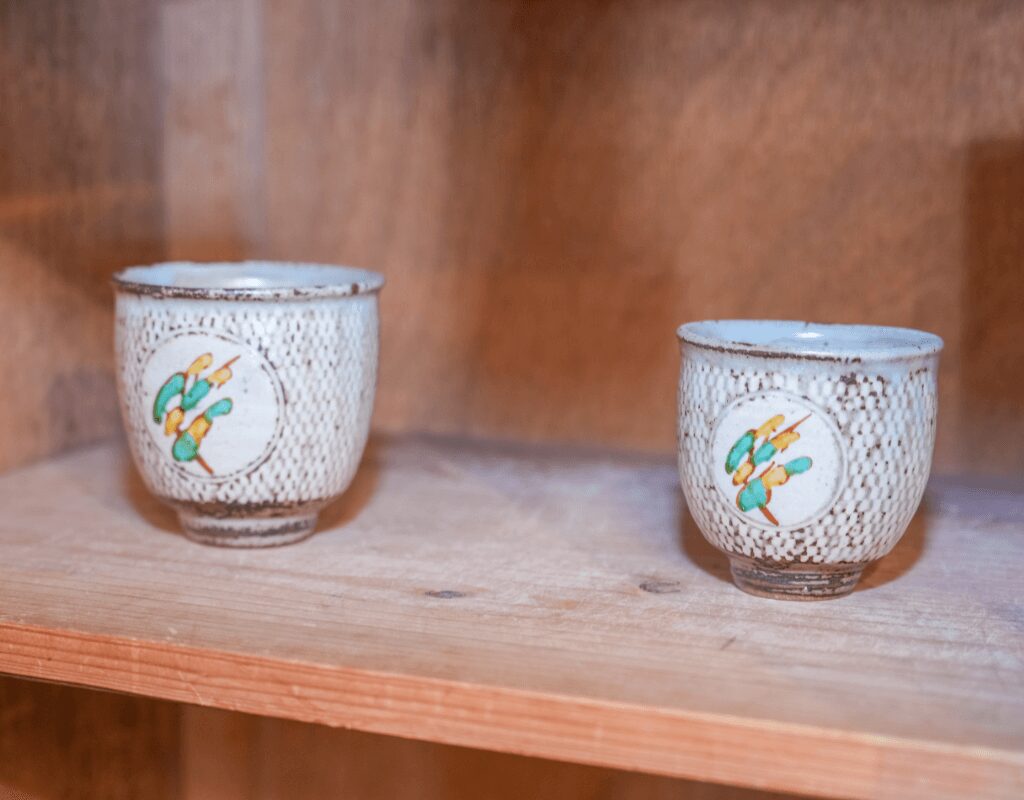Mashiko Town is famous as the “town of pottery,” known for its rich history and craftsmanship. At the heart of this tradition is Mingei-ten Mashiko, a specialty store dedicated to Mashiko pottery, managed by the third-generation owner, Takeshi Nakayama, and his wife, Kumi Nakayama. Today, we sat down with Kumi to learn more about the history of Mingei-ten Mashiko and the charm of Mashiko pottery.
For other articles of Mashiko Town, please check below.
Table of Contents
As the first specialty store for Mashiko pottery
Do you know about Mashiko pottery? It is pottery made in Mashiko Town, Tochigi Prefecture, and it was born at the end of the Edo period. In the Showa era, Shoji Hamada, the father of the Mingei movement, opened a kiln in Mashiko. Later recognized as a Living National Treasure, Hamada elevated Mashiko pottery from ordinary pottery to a refined craft, gaining worldwide recognition. Even today, during the pottery market season, about 40,000 people, both from Japan and abroad, visit this town of 20,000 residents. Mingei-ten Mashiko, the first specialty store for Mashiko pottery, was established in 1952 upon the recommendation of Shoji Hamada.



A Simplicity that Fits into Daily Life
Takeshi Nakayama, the current third-generation owner, traces his family’s connection to Mashiko pottery back to his grandmother, who sewed kimono gifts for foreigners at the request of Shoji Hamada, while running a kimono sewing class. From this encounter, Shoji Hamada suggested to Nakayama’s grandfather, “Why not open a specialty store for Mashiko pottery?” This suggestion marked the beginning of Mingei-ten Mashiko’s history.
The store displays plates and teacups that feel soft and warm. “We select items that use Mashiko soil and natural materials to create simple pieces people can use every day. This approach has remained unchanged since we opened the store,” Nakayama says. Today, with the development of various glazes, the store’s style has expanded, but the core of the work still reflects Mashiko’s essence, made with local materials.



Unchanging in a Changing Era
Over time, pottery makers pass the baton to the next generation. Shoji Hamada’s kiln is now led by his grandson, Hamada Tomoo, following the work of the second generation, Hamada Shinsaku. Each generation adds their own style while keeping the essence of Mashiko pottery and passing down the tradition.
“Today, people often make what’s popular. That’s why many styles can look similar,” says Nakayama. “That’s why we focus on ‘staying the same.'” For example, if we selected plates that are light and thin, we might appeal to more people. But that would lose the thick, rounded charm of Mashiko pottery. After Shoji Hamada encouraged Nakayama’s grandfather, Mingei-ten Mashiko continues to select works based on the same principles, always sticking to “staying the same.” Visit and find your own favorite piece that will stay with you every day.


Details of Mingei-ten Mashiko
Contact: View Website
- SNS: Instagram
Address: 2901 Mashiko, Mashiko Town, Haga District, Tochigi Prefecture, Japan
Business Hours: 10:00 – 17:00, Closes on Tuesday.

